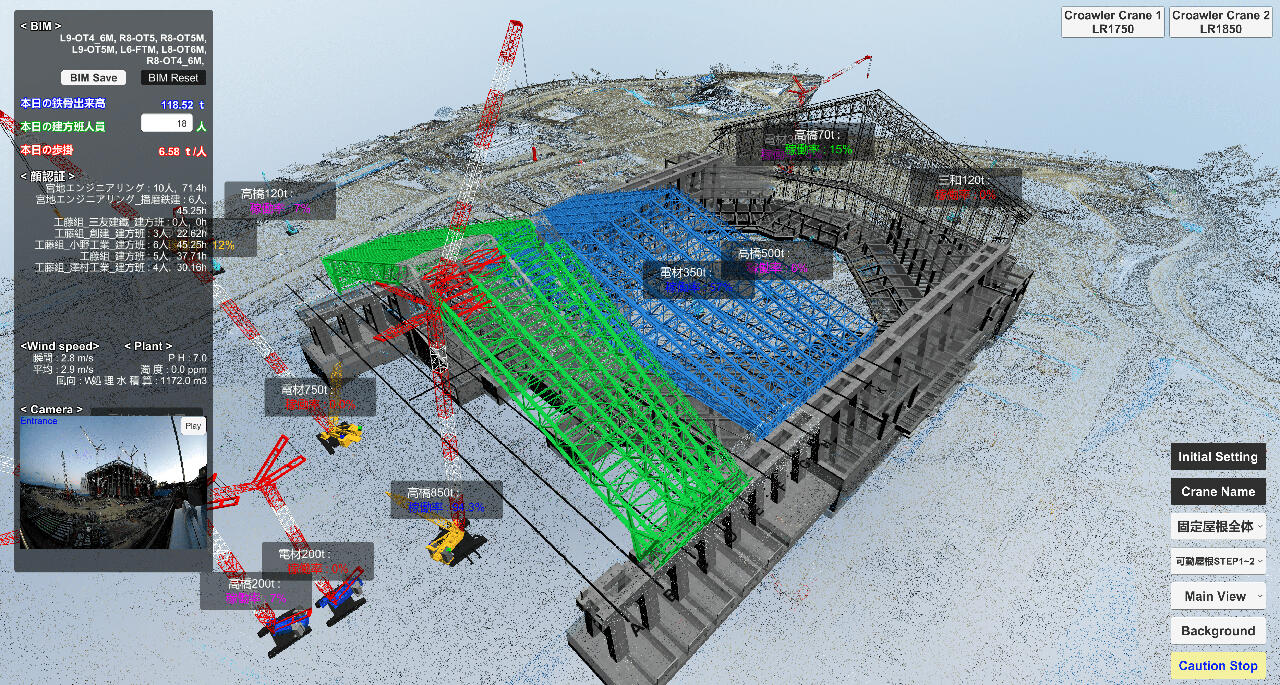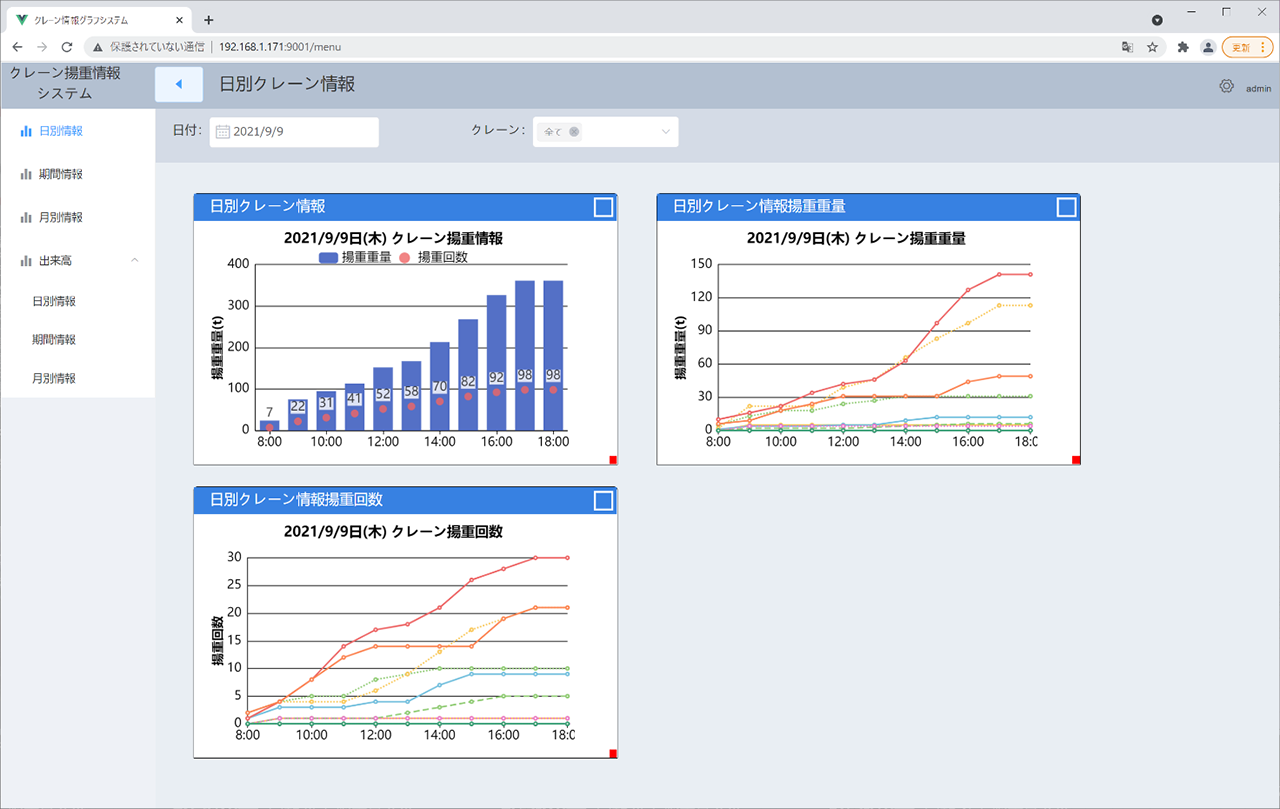Development of the 4D Construction Management Assistant System that reflects on-site operation status in real time
Obayashi Corporation will realize transformation of construction management work through remote confirmation of conditions on-site and analyzing information
-
Building Construction
Obayashi Corporation has developed the 4D Construction Management Assistant System, which uses BIM to create digital twins reflecting information such as surrounding terrain, crane position, and operation status of workers in 3D models in real time in a digital space. The 4D Construction Management Assistant System is being used in a field test for the new construction project, ES CON FIELD HOKKAIDO (Kitahiroshima City, Hokkaido).

It is important to transform construction and production process themselves utilizing ICT in increasing productivity and to realize work style reform in the construction industry. We have recently developed the 4D Construction Management Assistant System, which creates a digital twin (*1) reflecting information on conditions on-site such as people and things in the real world onto digital space in real time, to be used in construction management. Through centralization and visualization of site operation status, which would be checked at the site conventionally, we have reduced efforts required for collecting necessary information for managing constructions while enabling users to remotely check the status without having to go to the site. Users can also utilize feedbacks from the digital space and analyze collected information which can be used to calculate performed work and simulate construction plans.
Main features of the 4D Construction Management Assistant System are described below.
Actual on-site operation status can be centrally managed in digital spac
Point cloud data captured by drone is superimposed onto the construction status of the building based on the 3D BIM model to reproduce the uneven surface of the site. Using digital space as a platform, by linking information necessary for on-site management such as position and operation status of IoT-enabeld heavy equipment, footage from surveillance cameras, and workers' attendance information, on-site status can be reflected in real time. Through centralized management on digital space, information that conventionally could not be gained without being on-site can be checked remotely, raising efficiency in construction management.
Data acquired can be utilized in supporting operations
With the field test, cranes are equipped with a wireless information collection system so that not only location and direction information through GNSS, but also boom, angle of swings, steel beams load from various sensor devices, and lifting status from monitor surveillance inside the cabin can be gained to check the operation status of cranes in real time. Information acquired is utilized not only for remote centralized management, but also to support management operations such as calculating performed work by estimating when steel beam components were assembled, which is done by putting loads and positions together with design weight and positions from BIM data.
When information is linked with the workers' entry/exit system, the number of workers per work team involved in work can be listed up and checked in real time, and work efficiency can be converted into data format per work team to be reflected in adjusting labor and in reviewing the work schedule going forward.

This system is equipped with versatility to easily reproduce in digital space information acquired showing human movement and IoT objects. Going forward, we will realize digital transformation (DX) in the construction industry using field tests by managing necessary information to use in building and operating a platform for each site.
- *1 Digital twin
Technology to reproduce objects from the real world in digital space, using data collected in the real world as a base

